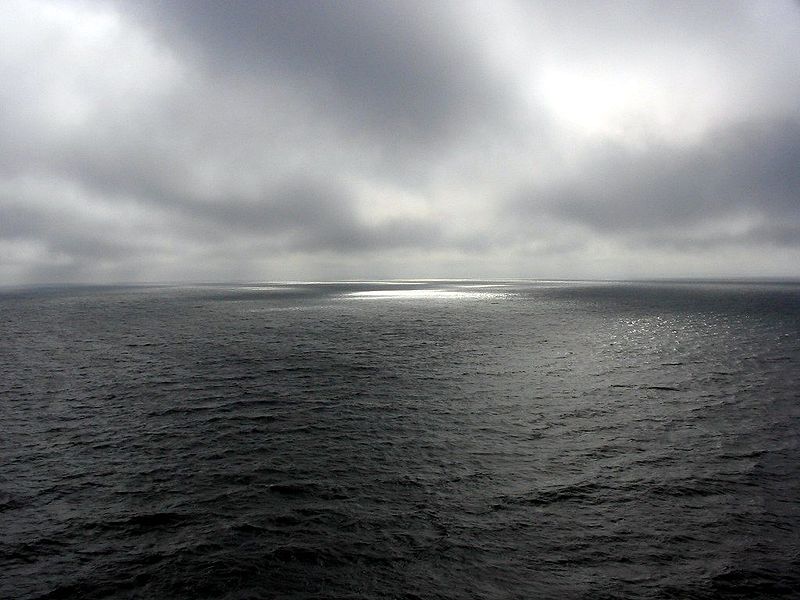Facts for Kids
The Skagerrak is a vital strait in Northern Europe connecting Denmark, Norway, and Sweden, between the North Sea and the Kattegat sea.
Overview
Economic Importance
Environmental Issues
Geography And Location
Tourism And Recreation
Ecology And Marine Life
Historical Significance
Cultural Aspects And Heritage
Navigation And Shipping Routes
Comparative Analysis With Other Straits

Inside this Article
Strait Of Gibraltar
Biodiversity
Common Eider
World War I
North Sea
Peninsula
Swimming
Sailing
Culture
Denmark
Did you know?
🌍 The Skagerrak is a strait that connects the North Sea and the Kattegat sea.
🚢 It is about 240 kilometers (149 miles) long, making it quite long!
🗺️ The Skagerrak lies between Denmark, Norway, and Sweden.
🐟 It is an important area for fishing, with fish like cod and herring found there.
⚔️ The strait has historical significance, including battles like the Battle of Jutland in World War I.
🌊 The Skagerrak is home to many marine animals, including seals and dolphins.
🏖️ Tourists flock to the Skagerrak for its stunning coastline and fun activities.
💵 The strait is crucial for the economy, supporting industries like fishing and shipping.
✈️ It serves as a shortcut for vessels traveling between the North and Baltic Seas.
🌿 Environmental issues like pollution pose challenges to the health of the Skagerrak.
Introduction
It is a strait, which is a long, narrow body of water that connects two larger bodies. The Skagerrak lies between three countries: Denmark, Norway, and Sweden. It connects the North Sea and Kattegat sea. This means that many ships travel through it on their way to different parts of the world! The strait is about 240 kilometers (149 miles) long, so it's quite long! It's a busy waterway that helps people and goods move from place to place. 🚢
Economic Importance
Many people rely on it for their jobs. Fishing is one of the biggest industries here, with people catching various fishes. The strait is also vital for shipping, helping transport goods like cars and furniture. Shipping companies like Maersk and DFDS use it to deliver things around Europe. Moreover, tourism brings visitors who enjoy the beautiful landscape and activities like sailing and fishing. The Skagerrak is an economic powerhouse for the countries surrounding it! 🛳
️
Environmental Issues
Pollution is one of the biggest problems. Sewage, plastic waste, and chemicals from industries can harm marine life. Overfishing also affects the balance of the ecosystem, making it hard for fish to survive and breed. It’s essential for people to work together to keep the water clean and safe for sea creatures! Organizations in Denmark, Norway, and Sweden are developing plans to protect its health, making sure it remains beautiful and rich in biodiversity for the future! 🌿
Geography And Location
️ It meets the North Sea to the southwest. When you look at a map, you can find it right above the North Sea! Some important towns around the Skagerrak are Skagen in Denmark, Strömstad in Sweden, and Larvik in Norway. These locations make it a key part of Northern Europe. The strait is very important for fishing, shipping, and tourism, making it a busy and beautiful area! 🐟
Tourism And Recreation
️ Every year, people come to enjoy the stunning coastline, beautiful nature, and fun activities. They can go sailing, fishing, and swimming, or just relax on the beaches! Popular spots include the Koster Islands in Sweden, perfect for hiking and birdwatching. There are also boat tours that let you explore the strait up close! Many people enjoy delicious local fish dishes at nearby restaurants, too. The Skagerrak is a perfect place for adventure and making special memories! 🚤
Ecology And Marine Life
The waters are rich with nutrients, supporting sea life and creating a balanced ecosystem. The underwater plants, such as seaweed, provide homes for smaller creatures, making this area a vibrant underwater world. Protecting marine life in the Skagerrak is very important for keeping Earth healthy! 🌎
Historical Significance
Did you know that it was a crucial maritime route for trade and transportation for centuries? Ships have crossed the Skagerrak since ancient times! In 1522, the famous explorer Hans Peder Hvitfeldt sailed through the strait. Many battles also occurred around it, including the Battle of Jutland during World War I in 1916, where many ships fought. These events mark important points in history, showcasing the Skagerrak's strategic importance in naval history. ⚔
️
Cultural Aspects And Heritage
People in Denmark, Norway, and Sweden share traditions that celebrate the maritime history of the strait. Folk tales explain how sea creatures and ships have crossed these waters for ages. Traditional festivals like the Skagerrak Festival in Skagen celebrate local culture, cooking, music, and art. Many sculptures and paintings from local artists are inspired by the beautiful seascapes. The Skagerrak helps bring communities together and reminds us of the strong bond people have with the sea! 🎨
Navigation And Shipping Routes
️ Many ships travel through its waters to connect various countries! The strait serves as a shortcut for vessels moving between the North and Baltic Seas. Special lighthouses warn ships about shallow waters and rocks. Examples include the Skagen Lighthouse in Denmark and the Koster Lighthouse in Sweden. The international shipping routes passing through the Skagerrak play an essential role in global trade, making it important for the economy of the countries nearby. 🚢
Comparative Analysis With Other Straits
For example, the Strait of Gibraltar connects the Atlantic Ocean to the Mediterranean Sea and is only 13 kilometers (8 miles) wide! The Skagerrak is much longer and connects two significant seas! Similarly, the Bering Strait, between Alaska and Russia, is famous for its rich marine biodiversity, just like the Skagerrak! Each strait has its unique features, making them important for geography, trade, and culture in their respective regions. Understanding these differences helps us appreciate the world’s waterways better! 🌊🌏

